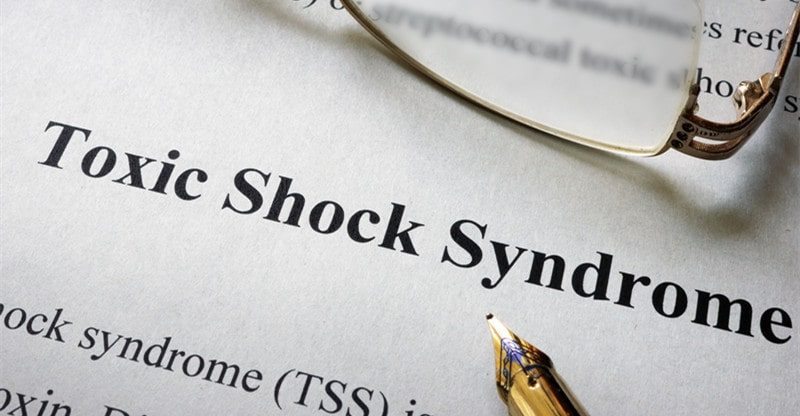What You Should Know About Toxic Shock Syndrome (TSS): Causes and Prevention
Toxic Shock Syndrome (TSS) is a rare but potentially life-threatening condition caused by the release of toxins into the bloodstream. It gained significant public attention in the 1980s due to its association with tampon use, but TSS can also occur in other situations.
This article aims to provide a comprehensive understanding of Toxic Shock Syndrome, its causes, and essential prevention measures.
What is Toxic Shock Syndrome?
Toxic Shock Syndrome is a severe, systemic illness caused by certain strains of bacteria, most notably Staphylococcus aureus and Streptococcus pyogenes (group A streptococcus). The bacteria produce toxins that can spread through the bloodstream, leading to widespread organ damage and potential organ failure.
In the 1980s, it gained popularity when several young women using tampons, especially those with high absorbency, were affected by TSS. This led to widespread public awareness and changes in tampon materials and usage guidelines to reduce the risk of menstrual-related TSS.
Because of this, there is a greater shift towards other menstrual products like reusable sanitary napkins, pads, and cloth.
History of Toxic Shock Syndrome
Toxic Shock Syndrome first emerged in the late 1970s and gained widespread attention in the early 1980s when several young women using high-absorbency tampons were affected by the condition.
Subsequent investigations revealed a strong link between tampon use and the development of TSS. Since then, the incidence of menstrual-related TSS has decreased significantly due to changes in tampon materials and usage guidelines.
Primary Causes of Toxic Shock Syndrome
TSS is primarily associated with the presence of Staphylococcus aureus or Streptococcus pyogenes bacteria. These bacteria can be found on the skin, in the nasal passages, and other body cavities, but they do not typically cause infections. In certain circumstances, however, they can enter the bloodstream and produce toxins, leading to TSS.
Who is at Risk?
While anyone can develop TSS, certain factors increase the risk, including:
- Tampon use: Although the association between tampon use and TSS is more commonly recognized in the past, it’s crucial to use tampons correctly and change them regularly.
- Recent surgery: Post-operative wounds can be entry points for bacteria into the bloodstream.
- Skin infections: Open wounds or burns can also provide a gateway for bacteria.
- Prolonged use of nasal packing: People who have nasal packing in place for a prolonged period may be at risk.
- Childbirth and miscarriage: These events can create conditions that increase the risk of TSS.
- Recent viral infections: Some viral infections can weaken the immune system, making individuals more susceptible to bacterial infections.
Symptoms and Diagnosis of Toxic Shock Syndrome
The symptoms of TSS can vary and resemble those of other common illnesses, making diagnosis challenging. Common symptoms include:
- Sudden high fever
- Low blood pressure
- Vomiting or diarrhoea
- Muscle aches
- A rash resembling sunburn, particularly on the palms and soles of the feet
- Redness of the eyes, mouth, and throat
- Confusion or disorientation
- Seizures
If you or someone you know experiences these symptoms and may be at risk for TSS, seek immediate medical attention.
Diagnosis and Medical Evaluation
Prompt diagnosis is critical for effective treatment. A medical professional will perform a physical examination, review the patient’s medical history, and order blood tests to identify the presence of toxins and bacteria. A culture may also be taken from the vagina, throat, or wounds to identify the bacteria responsible.
Prevention of Toxic Shock Syndrome
1. Safe Tampon Use
To reduce the risk of TSS associated with tampon use:
- Choose tampons with the lowest absorbency necessary for your flow.
- Change tampons every 4 to 8 hours, even if your flow is light.
- Consider using pads at night or during low-flow days.
- Alternate between tampons and pads during your period.
- Wash your hands before and after inserting or removing tampons.
2. General Preventive Measures
In addition to safe tampon use, there are general preventive measures that can help reduce the risk of TSS:
- Practise good hygiene: Wash your hands regularly and keep any open wounds clean and covered.
- Proper wound care: Follow your healthcare provider’s instructions for caring for wounds and surgical sites.
- Nasal packing care: If you have nasal packing in place, follow your healthcare provider’s recommendations for care and removal.
- Menstrual cup safety: If you use menstrual cups, make sure to follow the manufacturer’s guidelines for cleaning and insertion.
Conclusion
Toxic Shock Syndrome is a rare but potentially serious condition caused by bacterial toxins entering the bloodstream. Though it gained initial prominence due to tampon use, it can occur in various scenarios. Recognizing the symptoms and seeking immediate medical attention is crucial for early diagnosis and effective treatment.
Practising safe tampon use and following general preventive measures can significantly reduce the risk of developing TSS. Understanding the causes and prevention methods empowers individuals to protect themselves and others from this potentially life-threatening condition.



